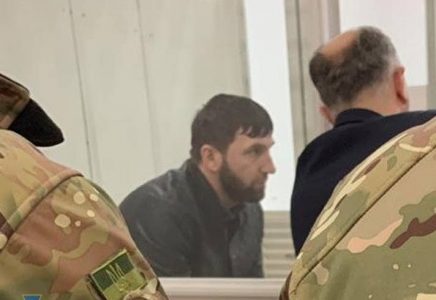
How Ukraine became the home for Islamic State leaders?
As far as extreme terror went, Al Bara Shishani had a reputation. Understood to have held the post of Isis’ deputy minister of war, head of a unit responsible for “special operations” and surveillance, the Georgian-born commander reportedly had a hand in it all: executions of “non-believers”; public beheadings; terror operations abroad.
He also had a reputation for being dead – that is, until last Friday.
Al Bara Shishani’s dramatic reappearance in the dock of a court room in central Kiev was shocking not only for the fact of how alive he was.
As details emerged about his miraculous resurrection – how he dodged what had been reported as a fatal air strike in Syria, then used a fake passport to travel to Turkey and Ukraine, where he would live untroubled for two years – a number of questions came begging about Kiev’s capacity and willingness to deal with terrorists taking shelter within.
According to the SBU, Ukraine’s admittedly unreliable security agency, Al Bara Shishani even continued to coordinate Isis terror operations from Kiev.
Born Cezar Tokhosashvili, Al Bara Shishani is one of several Isis commanders to hail from the Pankisi gorge region in northern Georgia.
The history of the mountainous territory has close ties to Chechnya, located across the border with Russia, 40 miles to the north. Most of Pankisi’s 10,000 residents belong to a few ethnic Chechen clans; several hundred refugees moved here following the conflicts there. “Shishani” is the Arabic rendering of “Chechen”.
More recently, the gorge has been associated with the fighting in Iraq and Syria. According to various estimates, between 50 and 200 of its young men left to fight between 2012-15. Most joined units fighting Bashar al-Assad in the Free Syrian Army. Some ended up with Isis.
Multiple links to Syria meant everybody in the gorge knew everything about Al Bara Shishani’s terror career, says Sulkhan Bordzikashvili, a local journalist in Pankisi.
They followed him as he decamped to Latakia, western Syria, in 2012; then in 2015, when he joined Isis. Some approved. Others did not.
It was also an open secret that another local boy, the one-legged and one-armed Akhmed Chatayev – aka “Akhmed the One-armed” – played a key role in converting Al Bara Shishani to Isis.
Source: Independent





